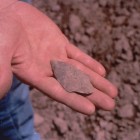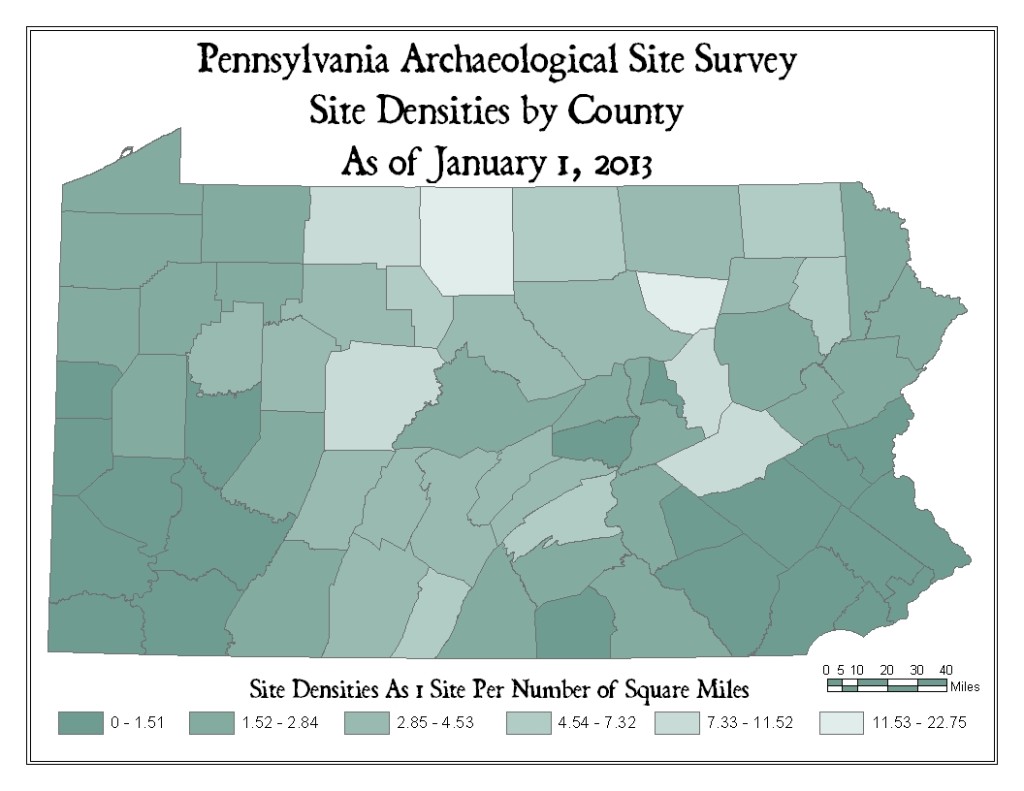These two acronyms represent years of cooperation among various groups of people who are concerned about Pennsylvania’s past.
SPA is the Society for Pennsylvania Archaeology. SPA was organized in 1929 to: “Promote the study of the prehistoric and historic archaeological resources of Pennsylvania and neighboring states; encourage scientific research and discourage exploration which is unscientific or irresponsible in intent or practice; promote the conservation of archaeological sites, artifacts, and information; encourage the establishment and maintenance of sources of archaeological information such as museums, societies, and educational programs; promote the dissemination of archaeological knowledge by means of publications and forums; foster the exchange of information between the professional and the avocational archaeologists.”
SPA includes avocational, professional, academic, and student archaeologists organized into local chapters around the state; and provides a unique forum where all of its members can come together and discuss the rich archaeological record of the Commonwealth and learn from each other.
PASS is the Pennsylvania Archaeological Site Survey. This is the record of all of the archaeological sites that have been reported to the Pennsylvania Historical and Museum Commission or the Carnegie Museum of Natural History over most of the past hundred years. It is maintained by the Pennsylvania Historic Preservation Office and consists of both paper and electronic records. It includes sites found by museums, educational institutions, and surveys conducted by cultural resource management firms for development projects. But more sites in the file were contributed by avocational archaeologists than any other source. Many of these recorders were members of SPA, though that is not a requirement to record sites. There are currently over 22,000 sites in the files.
Unfortunately, no systematic survey of the Commonwealth for archaeological sites has been undertaken. While there have been a few regional surveys in the past, generally sites are added to the file only when someone voluntarily submits information. Generally, archaeological sites are investigated only when required by federal or state laws. This leaves much of the state unreported.
If you look at the map of site distributions, it is very clear where collector activity has been the greatest. Although Washington and Susquehanna Counties are roughly the same size, as of January 1, 2013, Washington County has 1610 recorded sites and Susquehanna County has only 166. These numbers may reflect some true differences in prehistoric occupation, but most of the disparity is a result of recorder activity.
The SPA gives an annual award to the local chapter that records the most sites within the year. By subscribing to the Keystone Preservation Post, you can find out who won (and other interesting information, as well!). This year’s winner will be revealed in the May issue.
Many collectors ask why they should record their sites. Although there can be many answers to this question, I have two that I emphasize: shared knowledge and protection.
Archaeological sites are the in-ground record of past human behavior. Most of our understanding of that behavior comes from the comparison of sites and the artifacts they contain to each other and to the materials used by people today. The more information we have to compare, the more we can understand about how people lived in Pennsylvania for the past 16,000 years or so.
The other reason to record sites is that certain federal and state laws require the consideration of the impact of projects on the environment and cultural resources. Many of the implementation procedures for these laws rely on knowledge gained from reviews of known sites. Basically, the more we know about archaeological sites throughout the Commonwealth, the better we are able to evaluate their significance. The more we know, the better we are able to establish importance and protect the knowledge embedded in other sites as they are identified. If a site is not included in our database/files, it cannot be considered in project review.
One classic example of how hording knowledge can distort the record comes from my own introduction to archaeology. When I was growing up in Western Pennsylvania, many of my neighbors had artifact collections and we all knew of sites where you could walk the fields and find “arrow heads.” When I took my first class on North American archaeology in college, the book we used had a series of maps in the back that showed the development and spread of various technologies throughout the continent. Western Pennsylvania was shown on most of those maps as either “vacant” or “unknown.” Our past was not part of the story, not because we had no story, but because no one had shared that story. I am happy to say that much of that hole has been filled in during the last generation.
 Here is one more set of initials that you should be familiar with: CRGIS – Cultural Resources Geographic Information System. The CRGIS is the online system where we share data we collect with the public. Information about the archaeological sites in our files is available to anyone who uses the site; locations are not! Neither are the names of collectors or owners (unless they are part of the site name). Site locations are considered confidential information, available only by special access. I recommend that you use the AskReGIS search section of the CRGIS to see what we already know about your area.
Here is one more set of initials that you should be familiar with: CRGIS – Cultural Resources Geographic Information System. The CRGIS is the online system where we share data we collect with the public. Information about the archaeological sites in our files is available to anyone who uses the site; locations are not! Neither are the names of collectors or owners (unless they are part of the site name). Site locations are considered confidential information, available only by special access. I recommend that you use the AskReGIS search section of the CRGIS to see what we already know about your area.
Please consider this article as your invitation to add your sites to the story of Pennsylvania’s past! PASS forms and guidelines for completing them are available on our website. If you have any questions, we are here to answer your questions. Please contact us at RA-CRGIS@pa.gov . To find a chapter of SPA to join and share your enthusiasm click here.



Leave a Reply